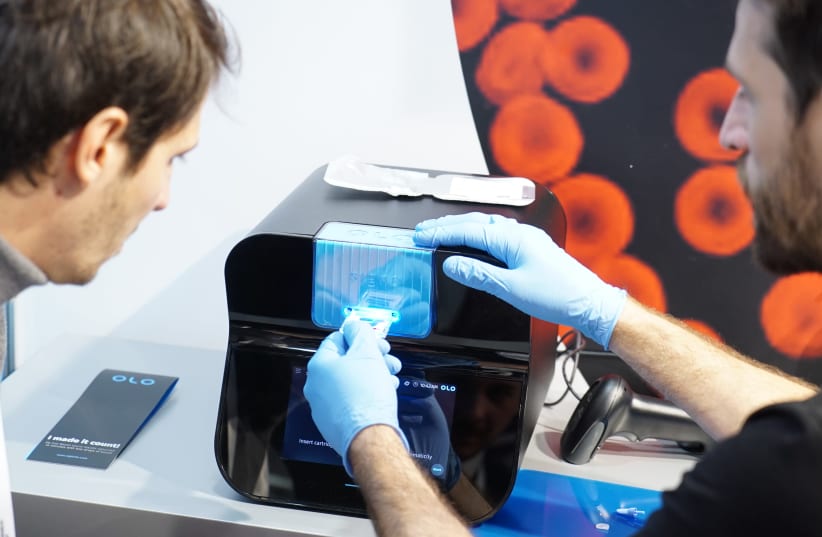A new collaboration between an Israeli biotech company and one of its hospitals aims to provide early detection of blood cancers by analyzing images of blood cells using advanced artificial intelligence (AI) algorithms.
Sight Diagnostics has announced a partnership with Jerusalem’s Shaare Zedek Medical Center to differentiate between different types of atypical lymphocytes – malignant cancer-related lymphocytes and reactive lymphocytes that are fighting infectious diseases.
Sight will be using its OLO device, which can perform a complete blood count (CBC) in a matter of minutes with just two drops of blood. The CBC is the most commonly ordered blood test. OLO creates a digital version of a blood sample by capturing more than 1,000 highly detailed images from the drops of blood. It then interprets them using AI algorithms.
“Sight’s innovative technology is unique in its capacity to provide morphological analysis of the various types of blood cells, as well as detecting minor morphological changes in order to rapidly and accurately differentiate between the different cell types,” the company said in a press release.
Differentiating between different types of lymphocytes continues to challenge hematological specialists because both malignant and reactive ones can have similar characteristics. However, detecting malignant lymphocytes as fast as possible could help doctors catch blood cancer earlier, potentially making treatment more successful.
“White blood cells are responsible for protecting us,” Sight Diagnostics algorithm R&D manager Barak Bringoltz said. “Lymphocytes represent 20%-40% of all white blood cells. When the body senses some sort of infection, these guys go into action, and they become reactive.”
When they react, their appearance changes. They become larger, their shape is altered, and they can become similar to the way some abnormal or malignant lymphocytes look in a person’s blood. Malignant lymphocytes are tied to leukemia, lymphoma, myeloma and other blood cancers.
“Sometimes they look so similar it is hard to differentiate between these two types,” Bringoltz told The Jerusalem Post. “The purpose of the research we are doing with Shaare Zedek is to develop the machine learning/artificial intelligence algorithms to detect atypical lymphocytes in the bloodstream and differentiate them into those likely to be reactive versus malignant.”
To get this done, Sight’s R&D team will analyze the images of the blood cells that will be collected during the course of the research. They will employ AI-based algorithms to cross-reference the visual information with clinical data from the hospital.
Sight has been working with Shaare Zedek for more than five years, Bringoltz said, and much of the data the company uses for benchmarking, testing and finding any performance gaps already comes from the hospital.
“From that point of view, the collaboration with Shaare Zedek is paramount for us,” he said.
Sight Diagnostics executive vice president Yochay Eshel said: “This research represents another chapter in the productive, well-established collaboration with Shaare Zedek Medical Center. It is an important step in our endeavor to continue developing Sight’s blood diagnostic technologies for clinical fields with a visual signature in the blood.”
According to Bringoltz, the company hopes to provide answers within six to eight months, and “we should be able to have some statement about whether we are able to distinguish some of these malignancies.”
